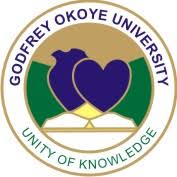INTERACTIONS AMONG VIRUSES
Interactions between viruses often occur naturally, as host organisms are frequently infected with more than one virus. The most common types of interaction include:
Complementation: This includes all those interactions in which when two viruses infect a cell, their gene products such as proteins and enzymes complement the action of each other in such a way as to have increased yield of one or both viruses. This can occur even between unrelated viruses. There is no genetic interaction and the progeny are like the parent viruses. It is the interaction of virus gene products during superinfection resulting in the production of one or both of the parental viruses being increased while both viruses remain unchanged genetically. In this situation, one of the viruses in a mixed infection provides a functional gene product for another virus which is defective for that function. If both mutants are defective in the same function, enhancement of replication does not occur and the two mutants are said to be in the same complementation group. In theory, the number of complementation groups is equal to the number of genes in the virus genome. In practice, there are usually fewer complementation groups than genes as mutations in some genes are always lethal and other genes are nonessential. There are two main types of complementation:
Allelic (intragenic) complementation which occurs where different mutants have complementing defects in the same protein (e.g., in different functional domains) or in different subunits of a multimeric protein.
Nonallelic (intergenic) complementation results from mutants with defects in different genes and is the more common type.
Complementation can be asymmetric; that is, only one of the (mutant) parental viruses will replicate. This can be an absolute or a partial restriction. When complementation occurs naturally, it is usually the case that a replication-competent wild-type virus rescues a replication-defective mutant. In these cases, the wild-type is referred to as a ‘helper virus’, such as in the case of defective transforming retroviruses containing oncogenes.
Recombination: Is the physical interaction of virus genomes during superinfection that results in gene combinations not present in either parent. There are three mechanisms by which this can occur depending on the organization of the virus genome:
Intramolecular recombination by strand breakage and re-ligation: This process occurs in all DNA viruses and RNA viruses that replicate via a DNA intermediate. It is believed to be mediated by cellular enzymes, as no virus mutants with specific recombination defects have been isolated.
Intramolecular recombination by ‘copy-choice’: This process occurs in RNA viruses (it has been known in picornaviruses since the 1960s but has been recognized in other virus groups, such as coronaviruses, only recently) probably by a mechanism in which the virus polymerase switches template strands during genome synthesis. Recombination occurs frequently in nature; for example, influenza virus reassortment has resulted in worldwide epidemics (pandemics) that have killed millions of people.
Reassortment: In viruses with segmented genomes, the genome segments can be randomly shuffled during superinfection. Progeny viruses receive (at least) one of each of the genome segments, but probably not from a single parent.
In intramolecular recombination, the probability that breakage-reunion or strand switching will occur between two markers (resulting in recombination) is proportional to the physical distance between them; therefore, pairs of markers can be arranged on a linear genetic map, with distances measured in ‘map units’ (i.e., percentage recombination frequency). In reassortment, the frequency of recombination between two markers is either very high (indicating that the markers are on two different genome segments) or comparatively low (which means that they are on the same segment).
Interference: Interference indicates inhibition of growth of one virusin a host when it is simultaneously infected withanother virus. This is usually mediated by interferon.This process results from the resistance to superinfection by a virus observed in cells already infected by another virus. Homologous interference (i.e., against the same virus) often results from the presence of Defective Interference (D.I.) particles which compete for essential cell components and block replication. In contrast, mixed infections sometimes increase theyield of one virus. This phenomenon is called enhancement.
Phenotypic mixing: Phenotypic mixing occurs in mixed infections, resulting in genetically unaltered virus particles that have some of the properties of the other parental type. This can vary from extreme cases, where the genome of one virus is completely enclosed within the capsid or envelope of another (pseudo typing), to more subtle cases where the capsid/envelope of the progeny contains a mixture of proteins from both viruses. This mixing gives the progeny virus the phenotypic properties (e.g., cell tropism) dependent on the proteins incorporated into the particle, without any genetic change. Subsequent generations of viruses inherit and display the original parental phenotypes. This process can occur easily in viruses with naked capsids (nonenveloped) which are closely related (e.g., different strains of enteroviruses) or in enveloped viruses which need not be related to one another. In this latter case, the phenomenon is due to the nonspecific incorporation of different virus glycoproteins into the envelope, resulting in a mixed phenotype.
